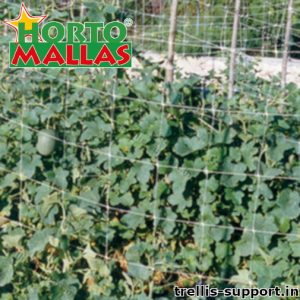Learn How to Easily Grow Trellis Vegetables
Having your own vegetable garden is one good way of providing fresh and healthy food for your family. One of the common problems being faced by home gardeners is the lack of ground space. This can be resolved though through the use of trellis vegetables method.
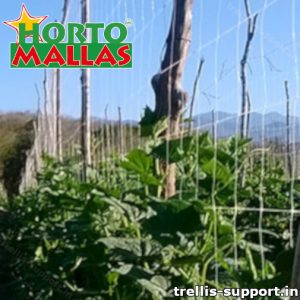
How Trellis Vegetables Method Works
If you are not familiar about how to trellis vegetables, it would be a good idea to learn more about it. This method is not just being used for its aesthetic appeal – like picture-perfect quaint little cottage gardens. Trellising is a method that allows you to grow your crops up and away from the ground. Thus, it is also commonly known as grow netting.
When trellising, plants are being trained to grow up instead of growing on the ground. Trellising provides better air flow and more sunlight. In addition, it is easier to harvest the fruits and vegetables when they are hanging on trellises than when they are sprawled on the ground.
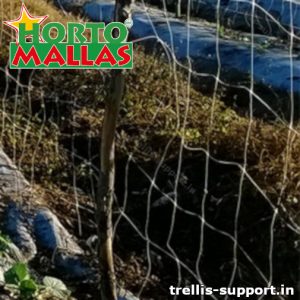
Benefits of Trellising
One of the benefits of trellising vegetables of that it lets you save on resources. Plants that are trellised require less water because instead of having to water the entire sprawling plants, all you have to do is to water the base part where the roots are planted.
Additionally, you will not have to worry too much about weeds attacking the ground and stealing nourishments from your crops. Since you are growing up and not on the ground, weeds have no access to the flowers and fruits. This means that you will not have to spend too much time getting rid of weeds.
Trellising is also beneficial because it adds structure to your garden. The height and the structure or trellises make gardens look more appealing. These structures are also beneficial for some birds because they get to have landing spaces while they sing and control the attack of insects. If you trellis vegetables, you will also help in increasing air flow and in minimizing plant diseases.
Trellising adds shade, as well. Cucumbers and other vining vegetables can grow on slanted trellis placed above a vegetable bed with cool-weather crops like lettuce. This allows you to protect the lower crops from the damaging heat of the sun during summertime. If your problem is the summer sun penetrating your home, you can add trellised perennials to add shading. Other plants, like gourds, pole beans and morning glories, have long vines that they can provide nice covering shade (like small tepee structures) where kids can play.
Perhaps, one of the main benefits of trellising is the ease of harvest. If you trellis vegetables, you can easily harvest the yields. You would not have to search through the sprawling jungle of plants as the yields are easily spotted hanging from the trellises. And since the yields are up, there is not much need for bending, which would be good for your hip. One thing that you would notice about the fruits and vegetables you will harvest is that they are cleaner, more uniform and ideal for commercial growing.
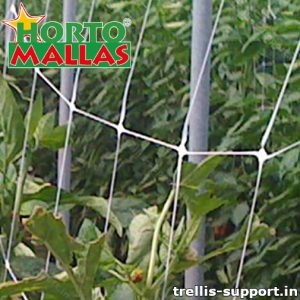
Vegetables Ideal for Trellising
There are several varieties of vegetable plants that can be trellised. There are actually some varieties that are better off when trellised. Pole beans, for instance, are very productive when grown in trellises with narrow rows.
When planting peas or beans along wooden structure or hog panels; planting on the sides of the trellis is ideal because this way allows you to effectively utilize space. Seeding the vegetables about two inches apart in ten-inch wide rows is ideal. You can then train the seedlings into growing through chicken wire or panels. They will soon cling naturally to the closest structure.
Cucumbers are easy to grow through trellising. All you need to do is to plant the seeds close to the trellis and they will do the rest of the work. Cucumbers do not need heavy-duty trellis. You can use chicken mesh, string mesh or hog panels. It is important to build the system prior to planting though. Space your cucumber plants or seeds on the side of your trellis about a foot apart. Do not keep them any closer as they do need more exposure to the sun. Additionally, cucumbers grow straighter when they are grown vertically, plus they are easier to find during harvest time.
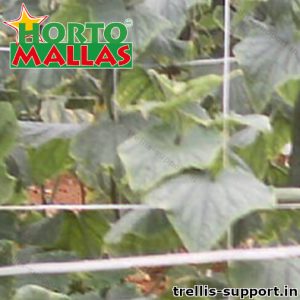
Tomatoes may require a little more help from you. Manual trellising is what tomatoes need. This could mean that you may need to plant stakes to train the plants to go up to the trellis. There are also tomato-specific trellising systems that can be used; one such trellis is called the Florida Weave. This kind of trellis works by surrounding the tomatoes with twine. Traditional trellising will work as well, just attach your plants using tomato clips or you can even use fabric scraps.
If you are planning to plant vegetables that yield larger sized fruits – like squash, melons and pumpkins – extra support will be needed. For such vegetables, you can make small hammocks (most gardeners use nylon stockings) for every fruit to provide additional support as the fruits mature in weight. Additionally, by using stretchable materials to hold the fruits, you are effectively preventing them from falling off. Grow netting is also an ideal method for vegetable gardening because it prevents birds and other insects from getting into the fruits.
Some people are not aware of the many benefits of trellising and there are others who do not even know how to trellis vegetables. Although ground gardening has been a traditional method for so many decades now, it does have some disadvantages, for instance, it will be very disappointing to expect fresh melons only to find rotten bottomed ones during harvest time. By elevating the plants, you let them grow up and yield fruits away from the moist ground, hungry slugs and weeds. Therefore, they are kept safe and clean.
